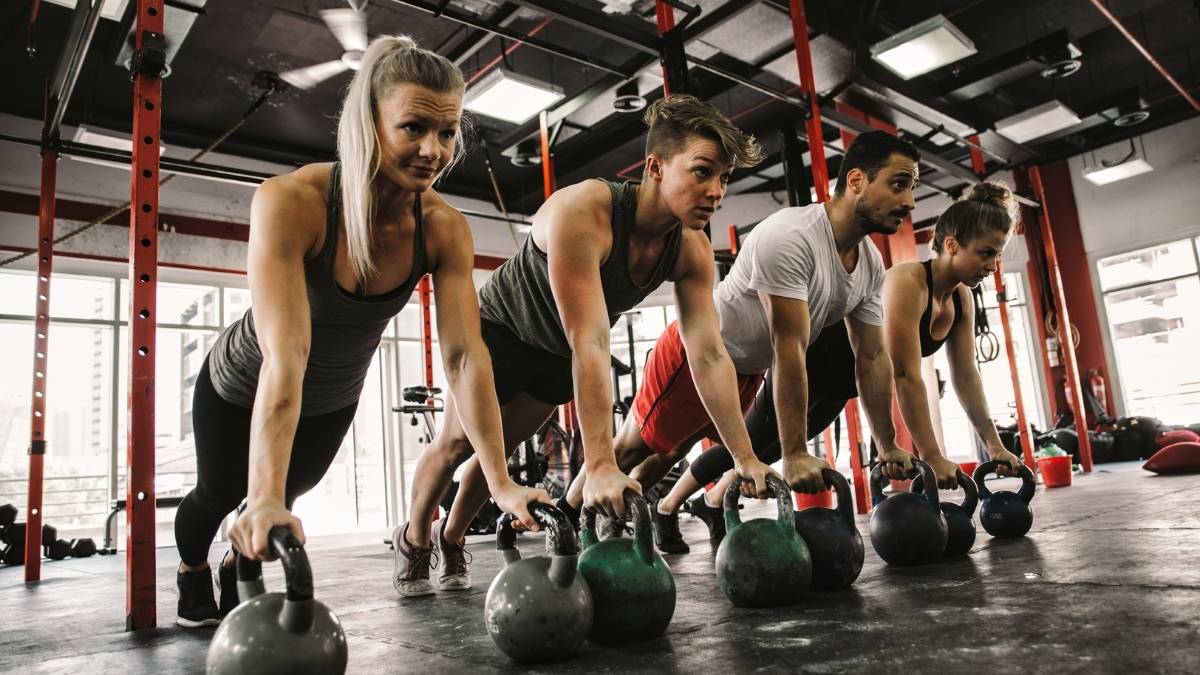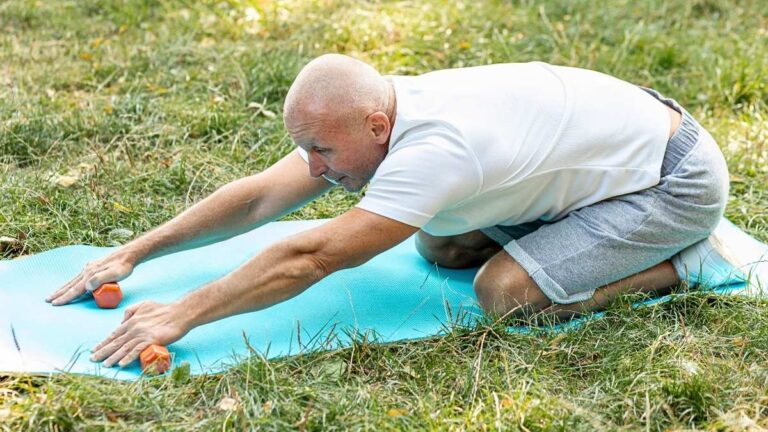Muscle After 40: The Secret Workout That Defies Aging!

Muscle loss after 40 isn’t just a myth—it’s a slow leak that drains your strength, posture, and energy without warning. You wake up one day and realize stairs feel steeper, bags feel heavier, and recovery takes twice as long. But here’s the truth most trainers won’t say out loud: it’s not your age—it’s your routine.
While others chase gimmicks or overtrain into exhaustion, there’s a smarter way to build muscle that actually works with your aging body, not against it. This method doesn’t rely on expensive supplements or marathon workouts. It’s built on science, strategy, and movements that fire up your metabolism while protecting your joints.
In the next few minutes, you’ll discover the exact blueprint that’s helping thousands over 40 regain lean muscle, reverse that “tired” look, and feel younger from the inside out. Let’s break the rules of aging—one rep at a time.
#1. Strength Through Mobility
Mobility exercises enhance joint flexibility, prevent stiffness, and improve muscle strength. By incorporating dynamic stretches and movements into your routine, you stimulate muscles through their full range of motion.
Regular practice reduces injury risk and boosts overall muscle function. Focusing on mobility keeps your body agile and resilient, especially as you age, allowing you to move more freely.
- Incorporate daily mobility drills like hip circles and shoulder rotations.
- Use foam rollers to relieve tension in key muscle areas.
- Prioritize full-body stretches after workouts to prevent tightness.
#2. Hormonal Boosting Exercises
Exercises that trigger the release of growth hormone (GH) are essential after 40. High-intensity interval training (HIIT) and resistance training help elevate GH levels, promoting muscle growth and fat loss.
These workouts challenge your body to work harder, increasing the metabolic rate and fostering lean muscle development while reducing body fat.
- Perform short bursts of intense exercise followed by rest periods.
- Include compound exercises like squats and deadlifts to stimulate growth hormone.
- Focus on full-body movements to maximize hormonal response.
#3. Functional Movement Patterns
Functional training mimics real-life activities, improving balance, coordination, and strength for everyday movements.

Exercises like squats, lunges, and push-ups strengthen the muscles used for daily tasks, making them more efficient and less prone to injury. These movements can be modified to suit any fitness level and provide a solid foundation for more complex exercises.
- Emphasize multi-joint movements such as deadlifts and overhead presses.
- Incorporate bodyweight exercises to build strength without equipment.
- Add stability work with tools like a Bosu ball or resistance bands.
#4. Low-Impact Resistance Training
Resistance training doesn’t have to involve heavy lifting. Low-impact exercises, such as using resistance bands or machines, can still offer impressive results while minimizing joint strain.
These exercises strengthen muscles without the wear and tear that high-impact movements may cause, making them ideal for maintaining muscle mass and strength as you age.
- Start with resistance bands for controlled, low-impact exercises.
- Use weight machines for guided motion and joint support.
- Focus on slow, controlled movements for muscle activation.
#5. Powerful Recovery Strategies
Recovery plays a key role in muscle growth and longevity. After workouts, muscles need time to rebuild and repair. Prioritizing sleep, hydration, and proper nutrition accelerates recovery and reduces muscle soreness.

Active recovery methods, like yoga or light cardio, help circulation and prevent stiffness, ensuring your muscles stay ready for the next session.
- Ensure adequate sleep, aiming for 7-9 hours per night.
- Stay hydrated throughout the day to support muscle repair.
- Integrate gentle stretching or yoga into your weekly routine for better flexibility.
#6. Mind-Muscle Connection
Connecting your mind to your muscles is essential for maximizing workout results. Focusing on the muscle you are working allows for better contraction and engagement, leading to more effective training.

This mental focus helps ensure that every repetition counts and that you’re targeting the right muscle fibers. Strength gains improve when you pay close attention to how the muscle feels during each movement.
- Slow down during each rep to fully engage the muscle.
- Visualize the muscle working as you perform each movement.
- Avoid distractions and concentrate solely on the muscle being targeted.
#7. Flexibility for Strength
Flexibility isn’t just for yoga enthusiasts. It plays a critical role in building strength by allowing muscles to stretch and contract fully. Improved flexibility enhances range of motion, preventing injury during intense lifts and exercises.
A flexible body supports better form, giving muscles the freedom to engage without limitation. Regular stretching can be as important as strength training itself.
- Stretch after every workout to maintain flexibility and muscle health.
- Focus on dynamic stretches to warm up before resistance training.
- Include mobility exercises targeting major muscle groups like hamstrings and shoulders.
General Tips:
Prioritize mobility exercises to enhance joint flexibility and muscle strength.
Include HIIT and resistance training to boost growth hormone levels.
Focus on functional movements to strengthen muscles for daily tasks.
Use low-impact resistance training to avoid joint strain and build muscle.
Embrace recovery strategies like sleep, hydration, and active recovery.
Develop a strong mind-muscle connection for maximum workout effectiveness.
Incorporate flexibility training to support muscle growth and prevent injury.
Final Thought On This Article:
Unlock the secret to timeless strength with workouts that defy aging. After 40, your body still craves muscle growth—if you train it right. It’s not about lifting heavy; it’s about smart, functional movements that work with your body’s natural rhythms. Strength, flexibility, and recovery become your superpowers. Commit to the right strategies today, and watch your muscles transform like never before. Age doesn’t dictate your strength—your choices do!






